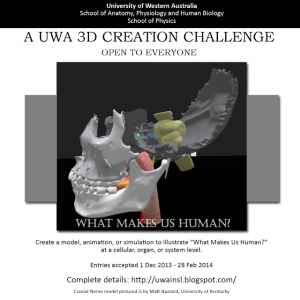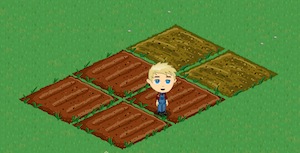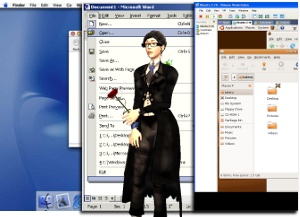 The dynamos at Uni of Western Australia have launched another great competition for content creators in Second Life. Having had the pleasure of judging some of UWA’s great art / sculpture competitions in previous years, I have no doubt this one will be another cracker. Here’s the full details via the UWA in SL blog:
The dynamos at Uni of Western Australia have launched another great competition for content creators in Second Life. Having had the pleasure of judging some of UWA’s great art / sculpture competitions in previous years, I have no doubt this one will be another cracker. Here’s the full details via the UWA in SL blog:Place the model in the contest entry receiver at UWA Gallery HERE http://maps.secondlife.com/secondlife/UWA/64/132/250:
- Select your item from inventory while holding down the CTRL key
- Drag the file from your inventory to the contest entry billboard prim.
- The outline of the billboard should turn red. You may then release your mouse button and your entry will be deposited.
- Do the same with your Creator’s Notecard.
- Mod/copy perms are appreciated, so entries can be displayed via temporary rezzers. This will allow for a greater number of prims/land impact for individual entries, if mod is not possible copy is adequate
Integumentary System: What are the structural differences between the layers of epidermis (skin)?
- By submitting an entry, you agree to allow the University of Western Australia to use your model/animation/simulation for teaching and learning purposes, and for promotion of UWA’s programs.
- Maximum land impact for any entry is 300. Mod/Copy perms are appreciated so we can rez/remove entries on demand, however, if mod is not possible, copy is appreciated.
- Size is not technically limited, but may not interfere with other exhibits or activities on the sim.
- Script lag, light or particle emitters, or sounds should be confined to the area of the entry.
- Contact FreeWee Ling, curator, regarding any special requirements such as orientation, media parcels, environmental needs, etc.
- We encourage the submission of all-original work. If any component of your entry is the result of rendering work that has originated from another author, whether or not it is under copyright, you must have permission to use it and acknowledge the original author of the component.



 If you’re a Mac user, you know you’ve got access to a whole slew of first-class applications. That is, apps that follow the user-interface style guidelines for the Mac. Painstakingly developed and tested over time, the guidelines ensure consistent layouts of menus, options and hotkeys, so that you don’t spend your time struggling to work out how to do the familiar, when you should be getting on with gaining expertise in the unfamiliar.
If you’re a Mac user, you know you’ve got access to a whole slew of first-class applications. That is, apps that follow the user-interface style guidelines for the Mac. Painstakingly developed and tested over time, the guidelines ensure consistent layouts of menus, options and hotkeys, so that you don’t spend your time struggling to work out how to do the familiar, when you should be getting on with gaining expertise in the unfamiliar.
Recent Comments